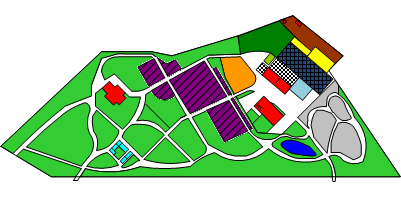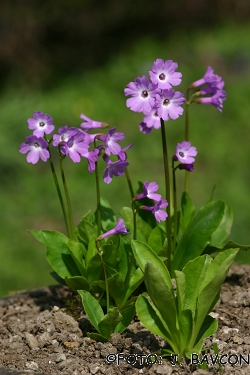



| NOMBRE LATINO | Primula carniolica | |
|---|---|---|
| AUTOR | Jacq. | |
| NOMBRE ESLOVENA | kranjski jeglič | |
| INGLES NOMBRE | ||
| GÉNERO | Primula | |
| FAMILIA (LATINO) | Primulaceae | |
| FAMILIA (ESLOVENO) | jegličevke | |
| ORDEN | Primulales | |
| CLASE | Magnoliopsida | |
| DIVISIÓN | Magnoliophyta | |
| REINO | Plantae | |
| TIEMPO DE FLORACIÓN | abril - junio | |
| PREVALENCIA | slovenski endemit (Z predalpski pas, severno obrobje Dinarskega gorovja) | |
| LISTA ROJA | ||
| CITES | ||
| PLANTAS CRECEN EN ETIQUETADO ( | ||
 | ||
| PLANTAS IMAGEN |
|---|
 |
| Primula carniolica |
| In Slovenia, Carniolan primrose (Primula carniolica) grows naturally only in parts of the Notranjska and Primorska regions and at a single site in the Gorenjska region. It is found in the western part of the pre-Alpine area and on the northern edge of the Dinaric region. It is interesting that this endemic species was discovered already by the doctor and natural scientist Johannes Antonius Scopoli, who was employed as the first doctor at a mine in the town of Idrija between 1754 and 1769. Unfortunately, the primrose found by Scopoli was not recognized as Carniolan. The plant was identified as Primula carniolica only later, in 1778, when it was described by the Viennese botanist Nicolaus Joseph von Jacquin. Even though before him Scopoli reported that the habitat of this particular variety of primrose was the surrounding area of the Divje jezero lake in Idrija, where it can still be found today, Jacquin stated that it grew in the Carniolan Alps. The approximation that may have been good enough for him is, in truth, completely inaccurate as Carniolan primrose has so far not been found in the Alps. In 1838, its site by the Divje jezero lake was visited by Frederick Augustus II of Saxony. On a previous occasion, marked by the erection of a commemorative obelisk, the Saxon king also visited the site of Blagay's daphne (Daphne blagayana) on Mount Polhograjska gora. Text: J. Bavcon |
¡ESTABLECIMIENTO CON TRADICIÓN Y CONOCIMIENTO DESDE 1810!

CELEBRA EL JARDÍN BOTÁNICO - ¡GUARDIÁN DE LA BIODIVERSIDAD DURANTE 214 AÑOS!